vii #34: 7 day trips in Puglia
I’ve not been abroad since last summer’s much-awaited return to Italy. The holiday tan escaped me once again but, nearly a year on, the fondness for our time in Puglia is not dimming.
vii is a weekly newsletter featuring an exploration into seven somethings.
To get every issue straight to your inbox, click
In case you missed it, why don’t you catch up on vii #1 before reading on?
vii #1: 7 places to stay in Puglia
This newsletter was the brainchild of an Italian roadtrip, conceived over dinner and drinks in Locorotondo, and so the natural place to start with the first instalment is some reflections on this summer’s first time visit to Puglia, or Apulia as it’s known locally.
I mentioned in the very first newsletter that one of the advantages of hiring a car (anywhere, but especially in Italy) is that it’s an enabler for day trips and spontaneously pulling over when something intriguing catches your eye. Trust me, we lost count of the number of times we stopped to have a little nose around! So where did we go? And would we recommend them? Let me tell you about the places we visited and whether we’re desperate to go back or would give it a miss next time… buckle up!
MONOPOLI
46km (41 minutes) from Bari
76km (51 minutes) from Brindisi
25km (31 minutes) from Locorotondo
39km (45 minutes) from Ostuni
Monopoli is a small seaside town and, whilst it’s no secret, it’s possibly overlooked by tourists in favour of its more glamorous neighbour Polignano a Mare, famous for its beautiful water and cave restaurant. Monopoli boasts the same beautiful water, being just 20 minutes further down the coast.
Like many of the cities and towns we stayed in, wandering the pedestrianised Centro Storico is an excellent alternative to soaking up the sunshine by the sea. Without a map in hand, I would encourage getting lost down curving narrow streets, lined with shuttered windows painted a very specific shade of green that unifies Monopoli.
Churches are around every corner, with the duomo towering above and noticeable from a distance through to smaller shrines you might not observe the first time you pass them.
Through an arch in a side street is the quaint Porto Antico, where small cobalt blue boats bob on the turquoise surface of the water. Compared with the nearby spiaggia (beach), it’s a much more peaceful location besides the sea.
Monopoli is well worth a visit and perhaps even staying in, especially if being by the coast is a non-negotiable for you.
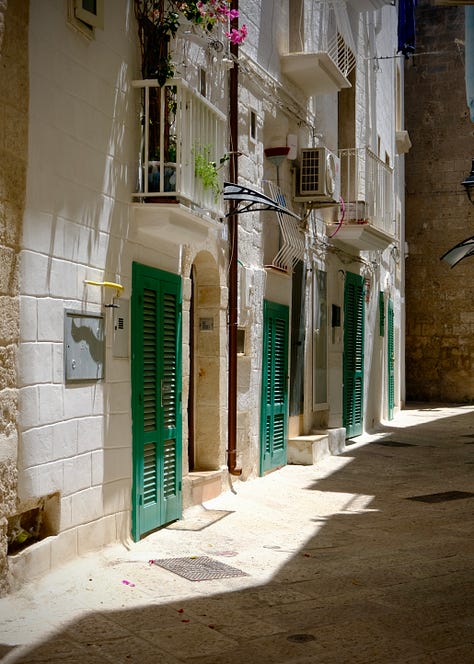

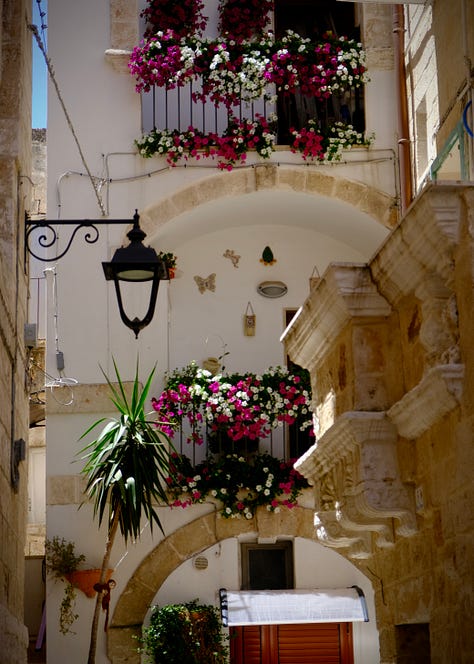
GROTTAGLIE
27km (38 minutes) from Ostuni
30km (39 minutes) from Locorotondo
51km (46 minutes) from Brindisi
85km (78 minutes) from Lecce
I’m not sure Grottaglie is on many tourist’s radars, although I may well be wrong! As somewhat of a magpie for handmade ceramics,
Puglia’s pottery capital was firmly within my cross-hairs and somewhere I wanted to spend a few hours en route to our next destination. We visited when travelling between Ostuni and Lecce and, in my opinion, was well worth detouring for.
Head specifically for the Quartiere delle ceramiche, a small area lined with shops that are mostly a hybrid between workshop and showroom for the artists that work here. Seeing the progress of the products for sale gives visitors an even greater appreciation for the dedication and craftsmanship that goes into each and every piece. For more of the history, Castello Episcopio houses the ceramics museum and is also worth a visit.
If you’re someone who likes a practical souvenir to remember a trip by, Grottaglie will no doubt provide you with something equally memorable and beautiful to commemorate your time in Puglia.
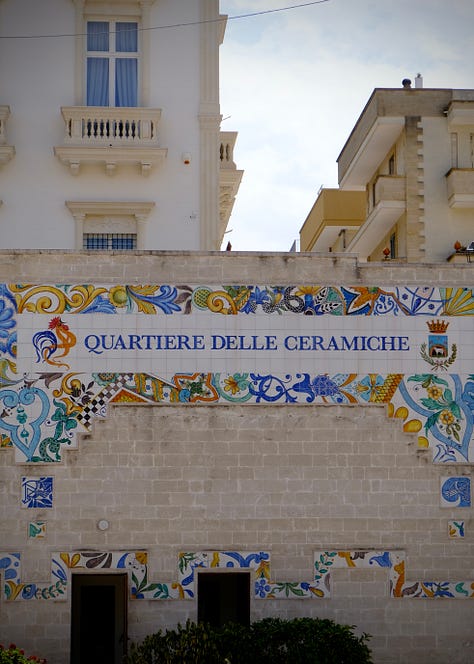
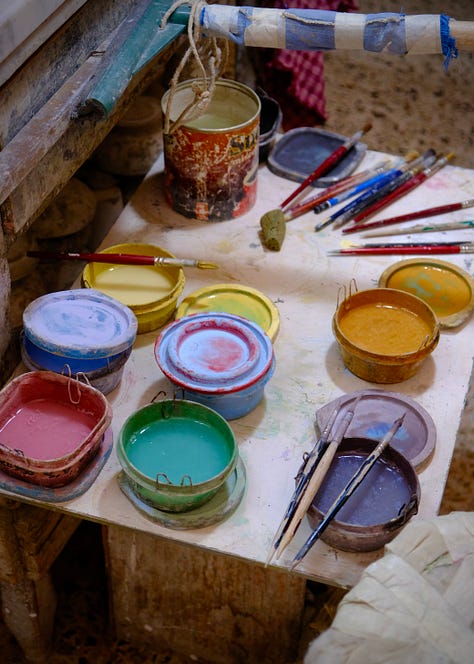

GALLIPOLI
39km (37 minutes) from Lecce
76km (56 minutes) from Brindisi
Two seas border Puglia and we spent more of our time on the Adriatic-adjacent north coast of the region. Don’t restrict yourself and spend some time by the Ionian Sea too with Gallipoli, a city unusual for having its old town situated on an island accessible by bridge, being a great place to spend a few hours.
It might feel repetitive that in almost every place I recommend exploring the streets and treating these towns like a maze you don’t want to find your way out of. But each place has its own uniqueness and quirks that are difficult to appreciate without a meandering stroll. Circumnavigate the island, cut across the shadier inner streets, visit the churches and stop for lunch in a fish restaurant or simply for a cooling gelato or sorbet.

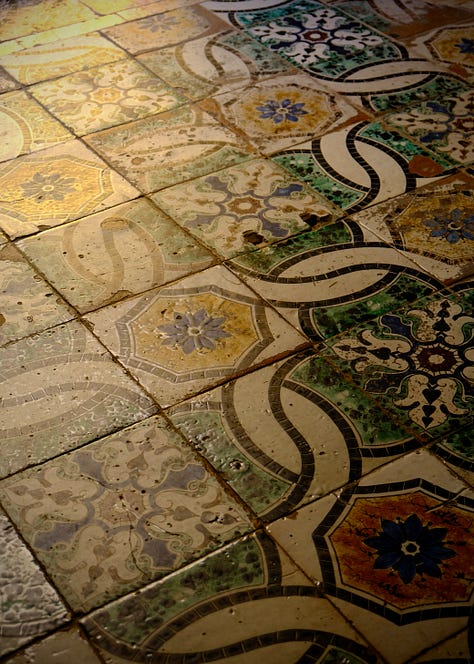
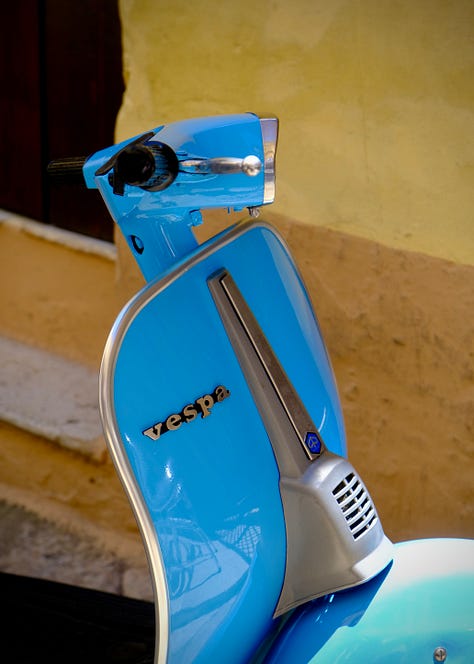
OTRANTO
& the coast road to Santa Maria di Leuca
46km (37 minutes) from Lecce to Otranto
Plus 54km (81 minutes) from Otranto to Santa Maria Di Leuca
Surely one of the primary reasons for hiring a car, other than the obvious of getting you efficiently from A to B, is when the journey is just as important (if not more so) than the destination. This day trip features a particularly spectacular coastal road (that for the boring amongst us will appreciate is very well-surfaced, a not insignificant point of note when you’ve encountered the biggest pot-holes ever on other drives).
The starting line for this journey is the city of Otranto, worthy of a visit in its own right and certainly not one to overlook. Situated on the Adriatic-facing north coast of the Salentine peninsula, Otranto boasts water that seamlessly transitions from so clear you can see your feet when you paddle in it out to a horizon of deep sapphire blue, with all the shades of turquoise, aquamarine and teal in between. Like every city, it has its cathedrals but is unique for the mosaics in Cattedrale di Santa Maria Annunziata and the frescoed walls of the quaint and compact chiesa di San Pietro.
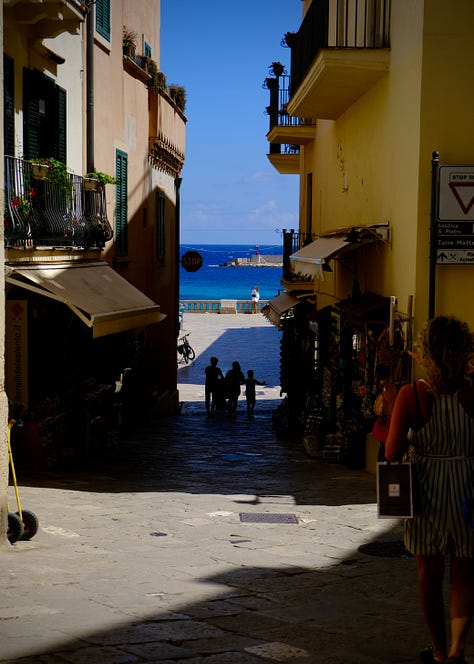


Outside of the city and en route to the coastal road is an old quarry Cava di Bauxite, a viewpoint like few others with contrasting red soil framing vibrant emerald green waters, which is worth a quick stop off at. The paths on the map can be ambiguous so make sure to park to the north of the quarry, accessible from a dirt road just off of SP369.
Continue your sightseeing by driving down the coast in the direction of your destination, Santa Maria di Leuca. You’ll pass numerous viewpoints and towns you might choose to pull over and stop in but we were particularly enamoured by il Ciolo. Admittedly we stopped after spotting road-side signs for ice cream but we were rewarded with so much more.
When in Santa Maria di Leuca, you will have reached the very tip of Italy’s heel which (look carefully you’ll notice as the waters blend) is where the Adriatic Sea of Puglia’s northern coast meets the Ionian Sea that’s cradled between the sole of Italy and western Greece.

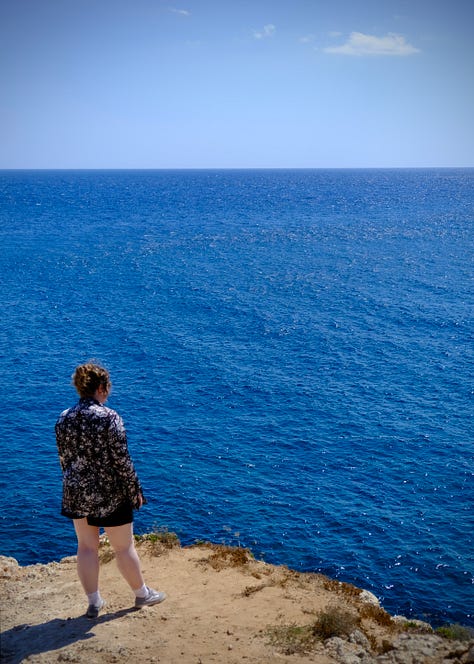
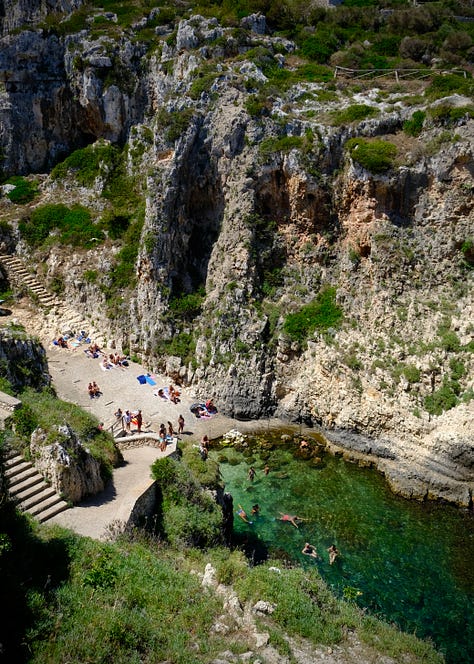
ALTAMURA
20km (25 minutes) from Matera
49km (44 minutes) from Bari
144km (107 minutes) from Foggia
A destination for food lovers, especially if a cheeseboard is your jam, Altamura is home to pane di Altamura DOP and Caseificio Dicecca. The former is a naturally leavened bread similar to sourdough with DOP Denominazione di Origine Protetta status (literally “Protected Designation of Origin”) since 2003, and records of breadmaking in the town as far back as the 1400s. Dicecca is a name synonymous with cheesemaking (caseificio literally translates to “cheese factory” in English) with the fourth generation of the family now running the business; the two sisters on the sales side and three brothers focused on cheesemaking.
After collecting some pane di Altamura from nearby Di Gesu (and later regretting not purchasing more), we met the exuberant Maristella Dicecca who swiftly prepared us a board of cheeses to try. You’ll have seen me mention an aversion to blue cheese in vii #30, reconfirmed when trying Amore Primitivo here. And whilst my personal preferences don’t lean blue on the dairy front, there is no disputing the innovation from brother Vito who ages this particular cheese in local Primitivo wine and is challenging the perceptions of what Italian cheese can be. On the more traditional side, the mozzarella was so outstanding that Nick considered expanding his list of preferred cheeses to include more than cheddar and parmigiano reggiano.
Altamura was a fleeting stop on a longer journey between our stays in Matera to Mattinata but somewhere I would return to in a heartbeat, if only for the food but I know the town has plenty more to offer.
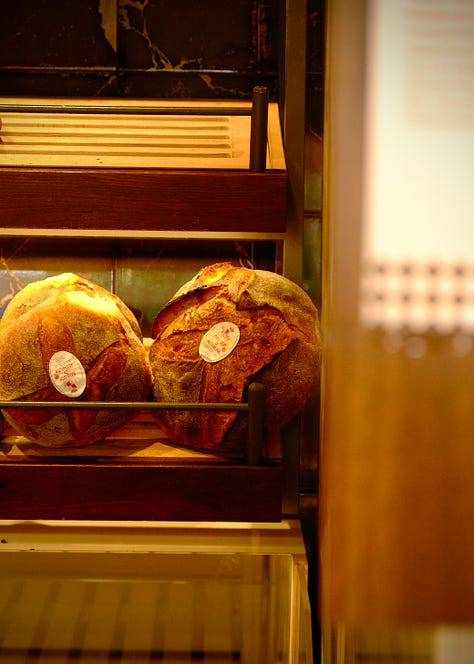

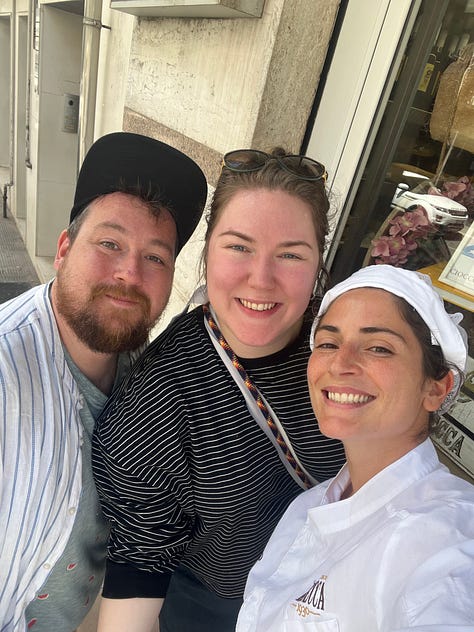
MONTE SANT’ANGELO & FORESTA UMBRA
20km (28 minutes) from Mattinata
56km (79 minutes) from Vieste
57 km (54 minutes) from Foggia
151km (118 minutes) from Bari
One of the allures of the Gargano peninsula and staying in Mattinata, other than beautiful coastline (something that was predominantly limited to our day trips), was the proximity to the Parco Nazionale del Gargano.
The Foresta Umbra or “forest of shadows” is part of the broader national park with trails to be hiked and an abundance of wildlife in and around the lakes. The area is characterised by winding roads snaking across the region, penetrating deep into the forest, ascending the mountainsides and back down towards the seaside towns. Driving is an excellent way (possibly the only way) to explore the peninsula and we enjoyed the journeys as much as the destinations. Laghetto d’Umbra surprised us with deer in the nearby animal shelter and turtles in the lake itself.

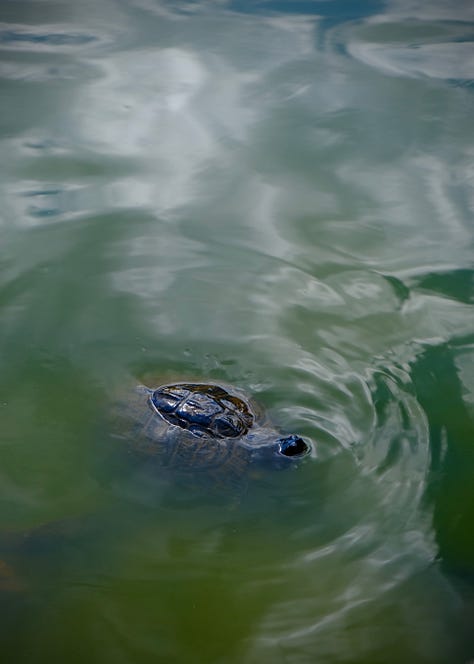

One town perched high in the clouds is Monte Sant’Angelo, which is home to astonishing views and Basilica Santuario di San Michele Arcangelo, the oldest western shrine of Archangel Michael and a site of pilgrimage since the Middle Ages. The sanctuary itself is situated within a natural limestone cave, with several chapels within the grotto. Both the sanctuary and the Umbra Forest have UNESCO status but for very different reasons and are worth visiting if ever in Gargano.
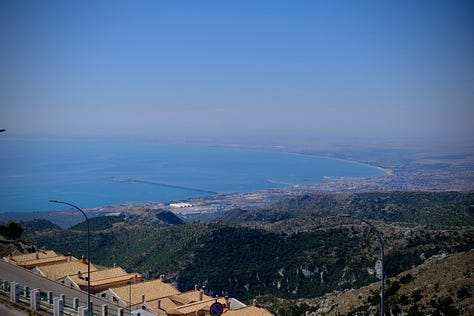

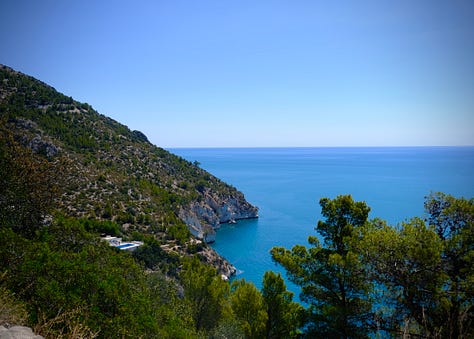
ALBEROBELLO
9km (11 minutes) from Locorotondo
32km (45 minutes) from Ostuni
64km (57 minutes) from Bari
80km (59 minutes) from Brindisi
An 8th day trip but not one I’d necessarily recommend. Much like the last day trip mentioned sites recognised by UNESCO, so is this next one. Unfortunately that’s where things start to diverge with the similarities.
Alberobello is very much a must-visit destination, famous for the domed-roof trulli houses that pepper the countryside of the Itrian Valley but are particularly concentrated here. As with most places popular with tourists, the tourists are bussed in by the coach-load and catered for by an abundance of eateries and souvenir shops. An almost Disney-fication is apparent as soon as you cross the threshold into the pedestrianised part of town, but lacking the nostalgia and magic that Mickey and his animated friends bring.
I’m not saying don’t go to Alberobello but get up early to avoid the crowds and manage your expectations. This is a place that won’t have the same rustic authenticity and charm you will have come to expect of the rest of Puglia. Be sure to drive the nearby country roads so that you get to see other trulli out in the wild.
Come to Alberobello and tick it off your bucket list but you don’t need to go back. With so much else to explore in the region, we won’t be making a return visit.


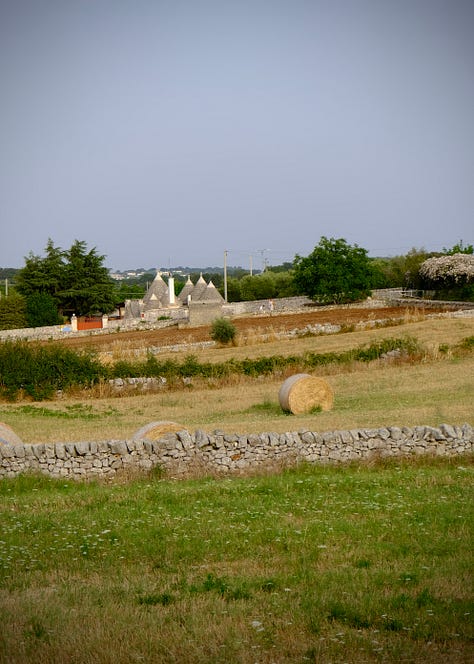
Whilst not a nearby alternative to Alberobello at more than 100km away, Castel del Monte offers a much less touristy UNESCO-recognised site which also features distinctly unique architecture. Situated in the Andria region of Puglia, Castel del Monte is an impressively well-preserved 13th century octagonal citadel boasting stunning views of its surrounding countryside.
54km (53 minutes) from Altamura
56km (57 minutes from Bari)
87km (77 minutes) from Foggia
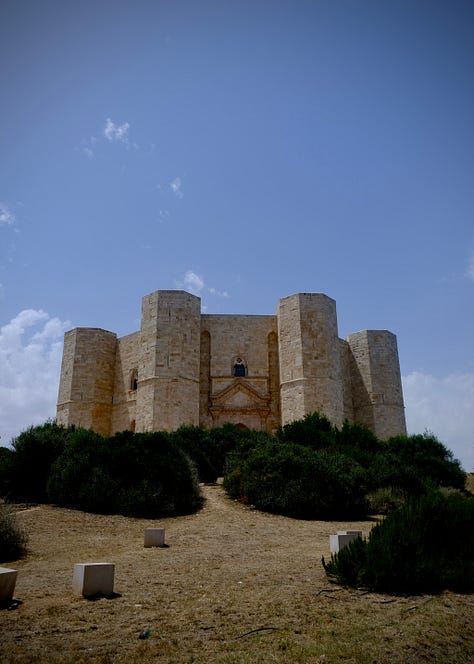
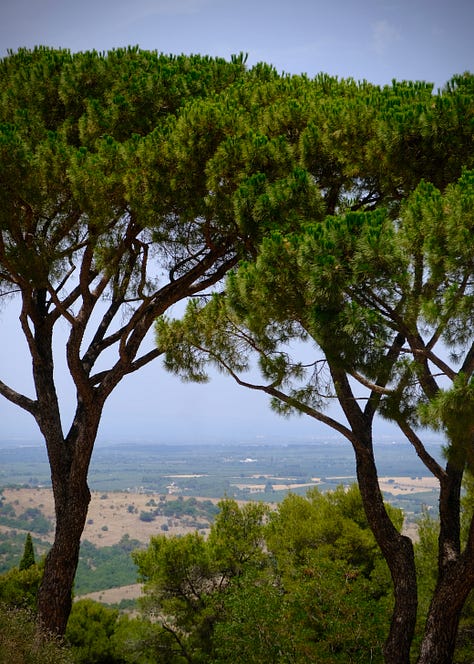
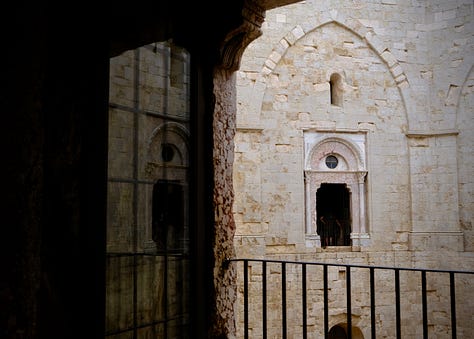
Puglia as a region offers so much to explore and experience. I can see why many return time and time again and I can foresee us doing similar in the years ahead, budgets allowing. Until then, I’ll look forward to greeting old favourites like a long-lost friend and the opportunity to discover new gems. But for now, I hope this (along with vii #1) inspire a visit to delight in la dolce vita and experience all of the rustic charms of Italy’s heeled boot.
Newsletters grow every time someone reads, likes, comments, shares and subscribes! If you’ve enjoyed reading this or other editions, please like, subscribe or—better yet—share it with someone you think may also enjoy it.





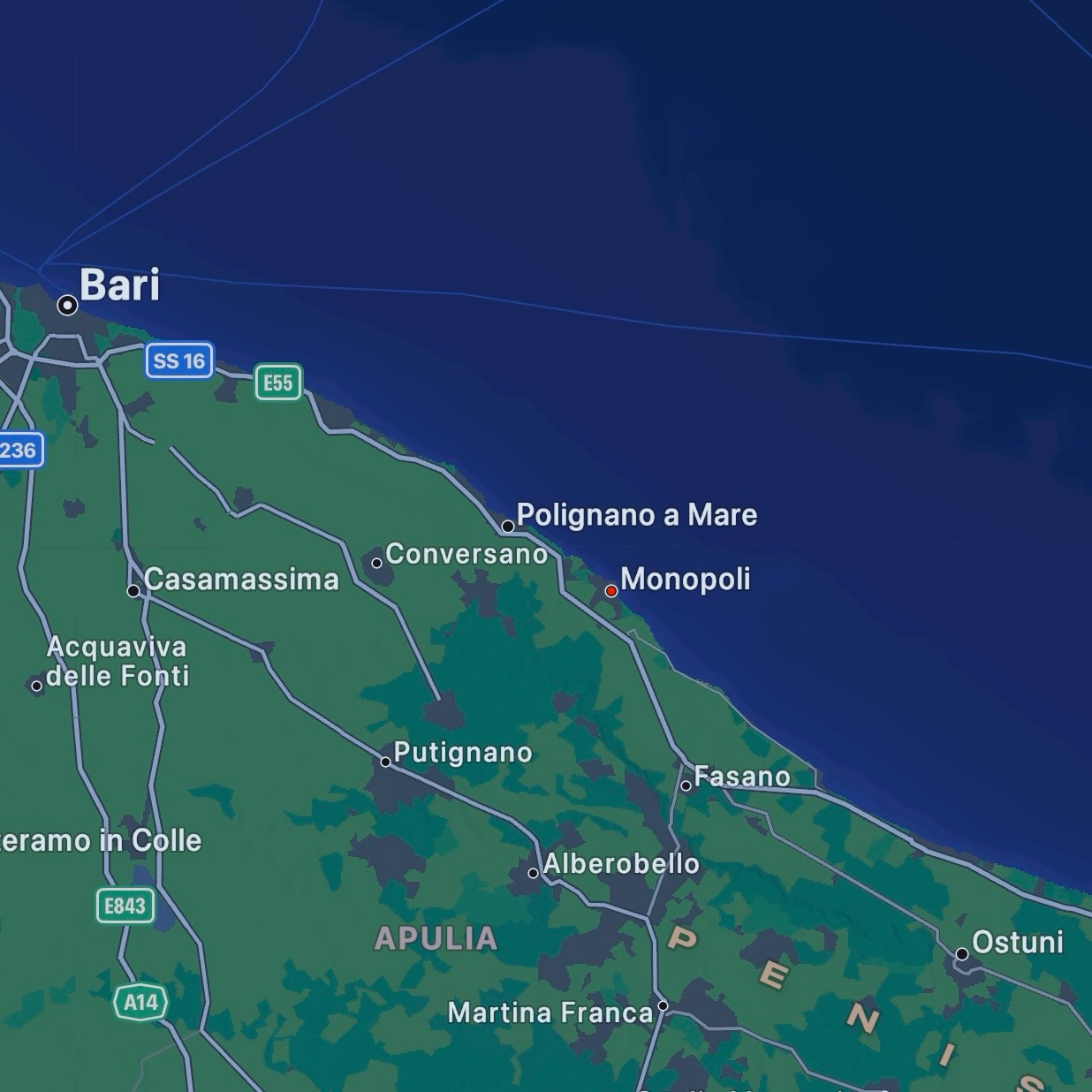


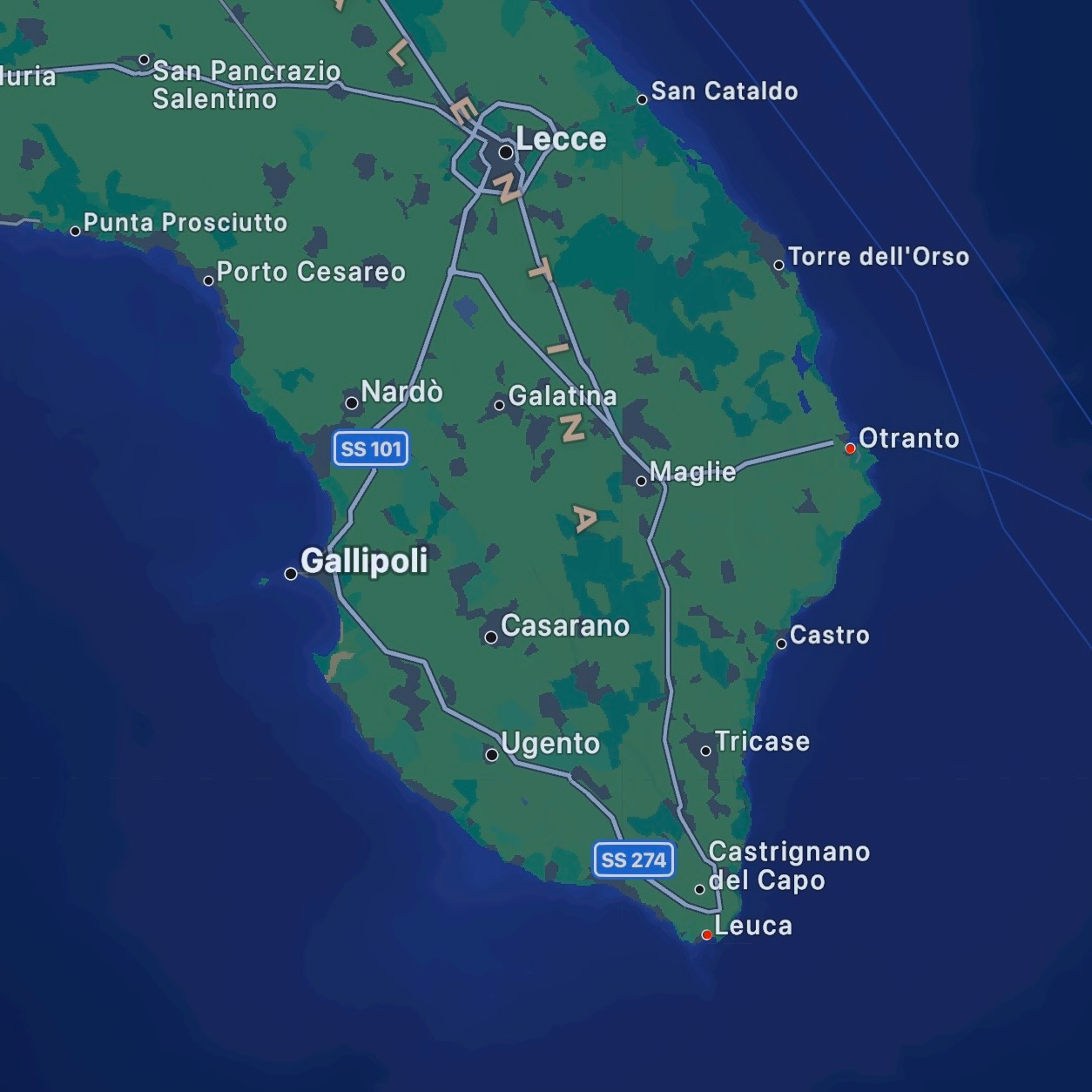
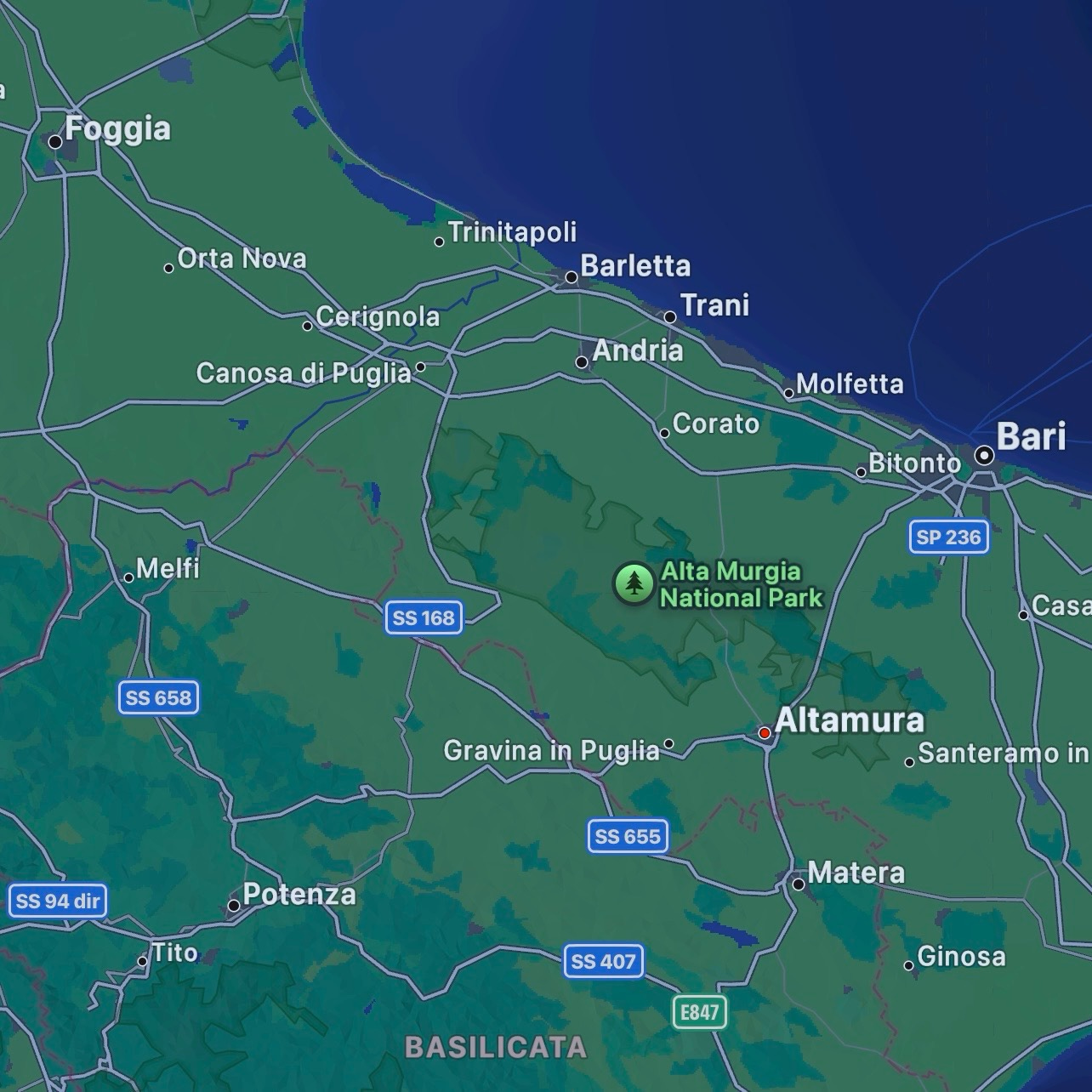




Looks like it was a dreamy trip! I just want to jump in the car and go 😍😍😍
Excellent work on the guide! Did you just take screenshots for the maps?